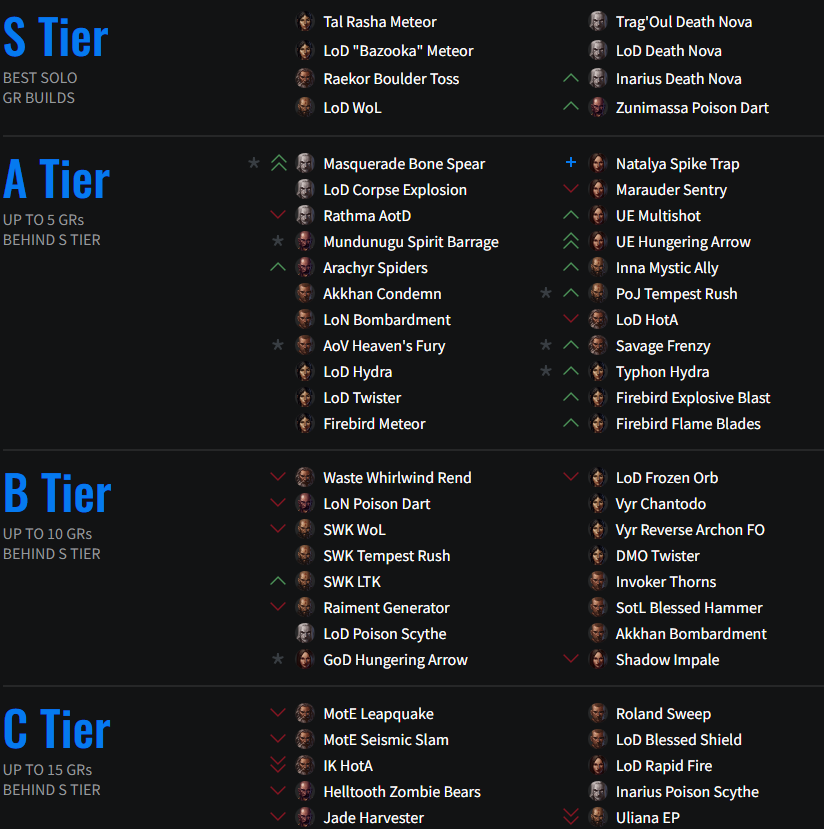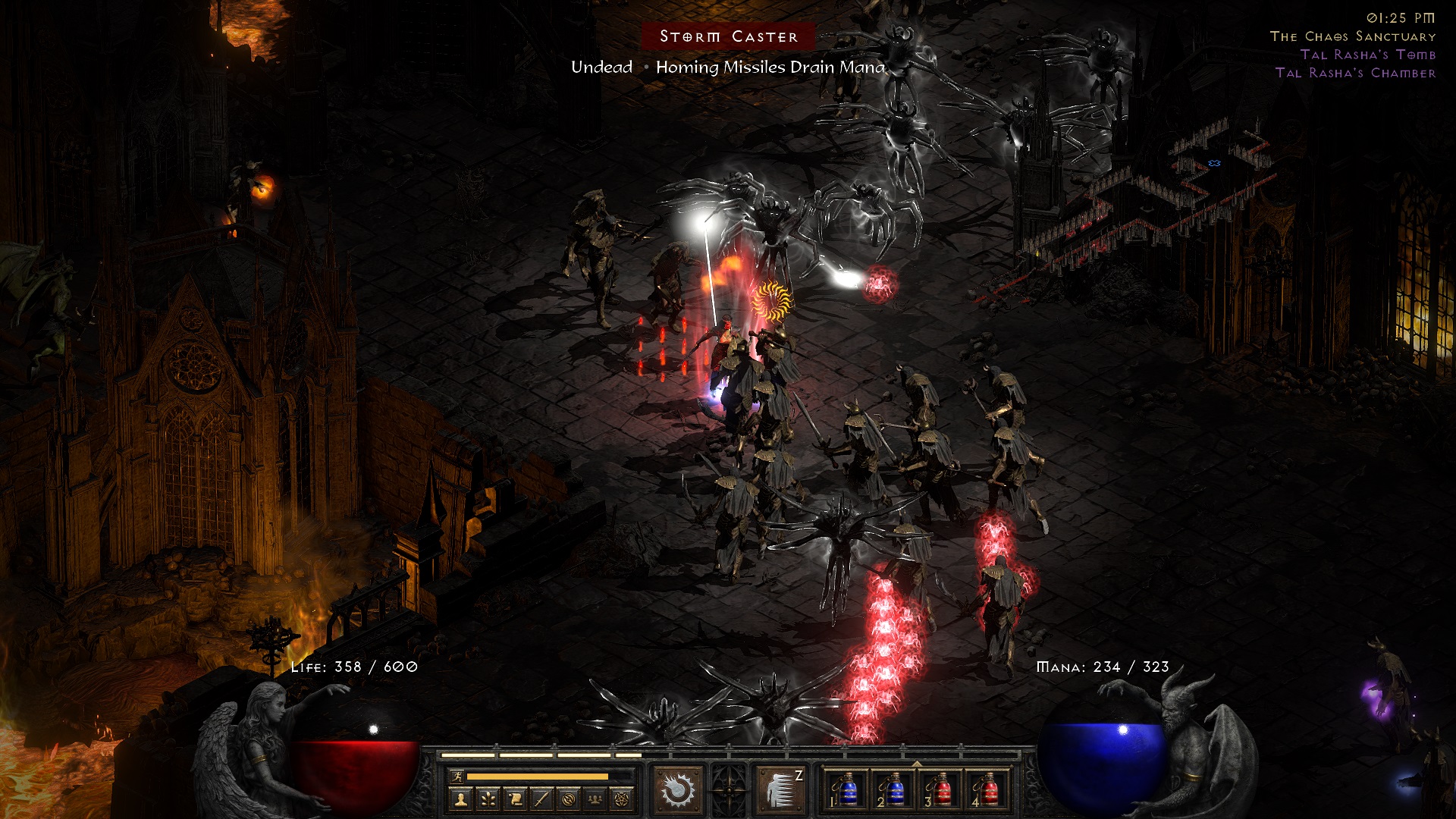
Diablo IV’s last week has just been the drama gift that keeps on giving, and since Blizzard’s latest toy is my favorite game right now, I’m here for it. Its position as a solid OARPG by a problematic company mishandling its recent live service games has ensured it’s the subject of praise, criticism, and existential crises for lovers of the genre and the series. Gamers who were around for Diablo III’s release know that all the kerfuffle around Diablo IV is nowhere near as bad as its predecessor. But it’s 2023, and theoretically, standards are higher now. The average ARPG player can spin up a decent build without a guide, and every patch is raked with a fine-toothed comb by respected and knowledgeable streamers with large communities.
All of this is to say it’s no surprise that this week’s 1.1.0 patch created some malignant hearts in the process.
Why was it such a disaster?
Nerfs never feel good, especially in an ARPG. In my experience with the genre, builds don’t usually get nerfed to the ground to allow other builds to shine. Instead, they become outdated as other builds become more powerful. There are some cases where they needed to be nerfed, one example being the Firebird Flameblade build in Diablo III, which originally used decoys to multiply damage to dummy-high amounts and had to be nerfed because of how insanely out of line it was with the other s-tier builds in Diablo III.
The Diablo IV team, however, did the opposite.

Patch 1.1.0 saw everything nerfed down. The damage nerfs to stats meant huge damage losses across the board. What hurt the most was the nerf to cooldown reduction (CDR) and vulnerability. The former is pretty self-explanatory, but the latter is basically a status debuff that increases damage damage received. These two stats were so insanely important that nerfing them caused a massive 50% damage reduction to many popular builds. The builds utilized by Sorcerers, for example, were so dependent on these stats that the damage loss was closer to 60%! Monster density has been an ongoing issue in Diablo IV as well, and in spite of promises that it was addressed, I myself saw little change in it whatsoever.
Put all these in a blender and you’ve got the 1.1.0 patch that led to calls for a boycott and a review-bombing on Metacritic. The team’s “oh shit!” reaction was to put game director Joe Shely, associate game director Joseph Piepiora, and associate director of community Adam Fletcher front and center to talk about the patch, basically issuing a public apology. I had a bad feeling about it when the event was first announced, but after watching through the chat, I have to admit it really was the best play for the team. However, as an avid ARPG player, I can’t help but wonder how they let things get to this point in the first place.
The Campfire Chat
I was skeptical about the chat because I wasn’t sure whether the devs would mock the players with a nonpology or actually own up to the mistake, but I’m relieved to report they did the latter. Shely, Piepiora, and Fletcher basically acknowledged that the patch was well-intentioned but terrible – and outright promised to never come out with a patch like this ever again.
The main focus of their discussion were the nerfs that hurt the most: vulnerability and cooldown reduction and the original thinking behind them, which was a hope for more build variety. Both cooldown reduction and vulnerability were practically required at the highest tiers of gameplay; in their minds, nerfing these stats would expand build variety, but all it did was upset everyone.
They also discussed the Sorcerer. If there was one major innovation this patch had, it was a new character archetype: the doily destroyer, the glass cannon, the build that does great damage but is easily swept away by even the calmest and most lovely summer breezes. Being able to one-shot Uber Lilith was just too much, so the response was to nerf it down, again with intent to increase player choice – it just wasn’t what anyone was expecting.
The Blizzard reps also promised a “key process improvement,” which basically means they’ll be more open to allowing an overpowered build to run rampant until they can “provide a more compelling alternative.” Likewise, they’re considering boosting monster density so that these powerful builds can actually feel tested. And they vowed a wider variety of builds, new items and powers in every season, and a “continually evolving endgame content with high monster density for powerful builds to mow down and activities to challenge your build” – all pretty basic stuff.
At the end, Blizzard followed up with a small preview of patch 1.1.1 to quell fears that messy patches would be the status quo. Most of the planned content is pretty straightforward, including buffs to Sorcerer and Barbarian items (which have been lagging). They also promised more monster density in both nightmare dungeons and Helltides (which was my personal main pain point) and briefly addressed drop rates, leaderboards, and loadouts.
Overall, I was pretty satisfied with the response to the uproar. This isn’t the first time Blizzard got a Diablo game wrong, so none of the revelations was mind-blowing. Maybe I’ve just become inured to the studio’s chaos, but as a player, I thought it was a good restorative conversation.
But then, my frustration didn’t originate from the Blizzard team’s ability to communicate; it’s because all these mistakes have already been made and resolved, and it’s wild to watch Blizzard continue to make them.
The source of the frustration
Outsiders looking in might not fully understand why this situation is so frustrating, but that’s the heart of it: It’s because this game keeps making the same missteps Diablo III did over a decade ago. It’s baffling that the same company that managed to remaster Diablo II so well is making such terrible decisions. The community management and gameplay mechanics lessons Blizzard learned from this horrible week were already learned the hard way 10 years ago. Sure, maybe Diablo IV’s post launch debacles can be attributed to the well-documented brain drain that’s been happening to the company over the last few years, but that’s an explanation – not an excuse. The company and the industry know better.

The new key process the dev trio discussed – the one about keeping a build overpowered – was already well-trod by both the Diablo II and III teams. They achieved greatness by ensuring nerfing was always a last resort. The fact that none of this was carried over or even noticed by the team for its big season one patch is deeply concerning. I sincerely hope the designers spend some time looking at the competition too because Path of Exile 2 is coming soon, and the running joke is that it will fix everything.
And let’s face it, there are some fundamental things about modern OARPGs that should be included right out of the box, and monster density is one of them. Have these devs ever seen the density the Diablo II’s Chaos Sanctuary? That was an area built in the early 2000s, and there were hella monsters up in there, yo! It’s 2023 now – this should have been cranked up to the max! Players shouldn’t have to threaten a boycott to make these basic genre concepts happen.

So since those lessons weren’t learned and deployed before hand, Blizzard had to come out with this hour-long mea culpa in a moment of public learning for the team. The Fireside Chat won me over, though time will tell whether Diablo IV will only get better – and wiser – with age.
For those who didn’t tune in, here’s Blizzard’s own recap of the stream.
Diablo IV’s Live Service Mission Statements:
• Keep the game fun for players.
• Have a wide variety of viable builds to discover, put together, and optimize, across all five classes.
• Introduce new items and powers every season to keep the game fresh and increase build variety.
• Continue to evolve the endgame, with high monster density for powerful builds to mow down and activities to challenge your build.
• When making changes to increase build diversity, we will let some builds be overpowered until we have provided compelling alternatives.
• Introduce meta changes will occur at predictable times, like the start of a Season.
• React quickly to squash game-breaking bugs, damage or crashes.Why we released Patch 1.1.0 and what we are trying to achieve:
• Diablo IV was always meant to be a capped power experience and not an endless grind. We know that building your character’s strength is an essential part of the fun of Diablo – and that it feels bad to take away power.
• So why did we do Patch 1.1.0? Our goal is for multiple builds to be powerful enough to defeat our toughest foes, like Uber Lillith: one build shouldn’t be the only way to play a class. Some changes implemented in this patch were made to address this issue.
• We also know that Nightmare Dungeons are currently way too difficult – they should feel achievable through multiple builds, and high-level tiers (beyond Tier 50) are particularly over-tuned towards difficulty. Patch 1.1.0 was the start of the changes needed to map against the changes we’re making to Nightmare Dungeons – which will be hot-fixed in today!How we are addressing concerns, and why and how our approach to patches will change moving forward:
• Moving forward, we will take a more surgical approach when adjustments to balance are needed. We will ensure that if we’re adjusting something overpowered, we will provide compelling alternatives for players to explore for their class instead.
• We will be improving communication, sharing patch notes at least a week prior to launch so that we can have meaningful conversations with our community.
• We will be introducing several changes in the upcoming Patch 1.1.1:
• We will be continually evolving the endgame with high monster density for powerful builds to mow down and activities to challenge your build.
• We believe that making changes to certain builds, rebalancing Nightmare Dungeons, and creating additional engaging end-game experiences will ultimately result in a better game for more types of players.On Patch 1.1.1:
• Today, we will release a Hotfix that introduces changes to Nightmare Dungeons: these are changes that map to some of the balance changes made in 1.1.0.
• We will be implementing Nightmare Dungeons tuning changes to pair with class changes that came with 1.1.0.
• Barbarians and Sorcerers – with Sorcerer first – will be getting adjustments to Legendary Aspects in Patch 1.1.1.
• Monster density will be substantially increased in Nightmare Dungeons, as well as in Helltide.
• We will add an additional stash tab as well as Elixir Stack Size increases.
• We will reduce the Gold respec costs by 40%.
• We want the leveling journey from 50-100 to be faster and are looking at increasing XP bonuses for playing on higher World Tiers.
• And more! We will go into more detail on these changes during our livestream next week.
Blizzard is promising another chat next Friday to discuss 1.1.1.
 The world of online gaming is changing. As the gray area between single-player and MMO becomes ever wider, Massively OP delves into this new and expanding frontier in Not So Massively, our column on battle royales, OARPGs, looter-shooters, and other multiplayer online titles that aren’t quite MMORPGs.
The world of online gaming is changing. As the gray area between single-player and MMO becomes ever wider, Massively OP delves into this new and expanding frontier in Not So Massively, our column on battle royales, OARPGs, looter-shooters, and other multiplayer online titles that aren’t quite MMORPGs.














